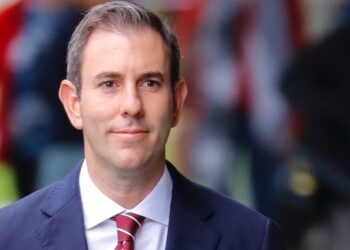The federal budget being delivered tonight is shaping up to be a “spendathon ahead of the election”, according to AMP’s Shane Oliver, with much of the new spending already announced and likely to be matched by the Coalition.
“The good news”, Oliver said in a market note published over the weekend, is that stronger-than-expected employment and commodity prices, along with bracket creep, have improved the budget’s starting position by $10–15 billion for this financial year and next.
However, that boost has already been outweighed by $37 billion in new spending since January across Medicare, infrastructure, schools, and energy subsidies over the next four years.
Moreover, Oliver expects the budget to include $3.5 billion in electricity rebates, more subsidies for industries hit by Donald Trump’s tariffs, and increased spending on Future Made in Australia, with defence spending also projected to rise.
“Netting this out will likely see this financial year’s budget deficit forecast revised down to around $17 billion (from $26.9 billion in MYEFO) and next year’s to $42 billion (from $46.9 billion) with deficits still projected out to mid next decade,” the chief economist said.
Oliver also expects the government to trim its growth forecasts to 1.5 per cent this year and 2.25 per cent next, while unemployment edges down to 4.2 per cent. Inflation should hold at 2.5 per cent, propped up by another round of electricity rebates, he said.
“We don’t expect the budget to alter the outlook for interest rates but were it not for all the extra public spending, RBA rates would be lower,” Oliver said.
Once the budget is done, Oliver believes the Prime Minister could announce the election as soon as next Sunday.
On the likely election outcome, he said: “The most likely scenario is that the Coalition won’t win enough seats to govern even with crossbenchers and Labor will lose its majority and have to rely on crossbenchers to form government which, if the Greens are required, could make it harder to get reforms done and push the government in a less business friendly direction which could worsen Australia’s productivity performance.
“If government is formed with the teals it could lead to a more reform-oriented approach, but that is highly uncertain.”
Cost of living front and centre
Treasurer Jim Chalmers confirmed over the weekend that cost-of-living pressures will be “front and centre” in the budget, saying that a new round of energy bill assistance will be a “bit of extra hip pocket help for households”.
“If you look right throughout the budget, whether it’s investments in Medicare and bulk billing, whether it’s investments in cheaper medicines, what budgets are all about is taking the country’s priorities, and in this case, the government’s priorities – Medicare, cost of living, making our economy more resilient – making room in the budget to do those things,” Chalmers said.
“The budget will be about the progress we’ve made together to here, and a plan to make the most of that progress from here, and part of that plan is rebuilding living standards which were falling sharply when we came to office. The defining feature of Tuesday night’s budget will be helping with the cost of living.”
Just last week, Deloitte Access Economics partner and report co-author Stephen Smith said that while the deficit estimate is slightly lower than the 2024–25 Mid-Year Economic and Fiscal Outlook (MYEFO), it should serve as a wake-up call for politicians eager to announce election sweeteners.
“The longer-term structural deterioration of the budget bottom line should be a reality check for politicians wanting to announce election sweeteners in the weeks ahead,” Smith said.
Momentum Media’s wealth portfolio is hosting a pre-election event on 10 April with key policymakers, including shadow treasurer Angus Taylor, where the budget will be dissected in great detail. Click here to find out more.




